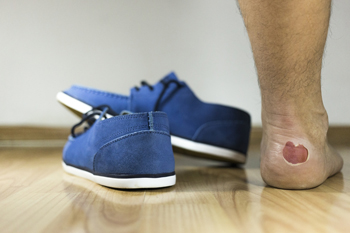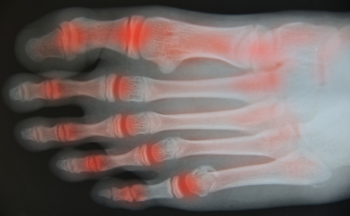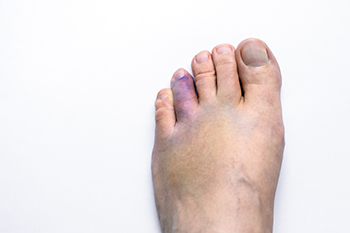Items filtered by date: April 2023
Cutting an Ingrown Toenail

Ingrown toenails are certainly no fun. When the side of a toenail grows into the skin, and the skin essentially grows over the nail, irritation can ensue. Ingrown toenails are also associated with redness of the skin. If you are someone that is living with an ingrown toenail, you may consider visiting a podiatrist to get the toenail cut. It is important to note that removing the ingrown toenail is typically a remedy that is saved for more severe cases. If a medical professional cuts the nail, they normally use the correct method of cutting the nail straight across using nail clippers. They also may use tweezers or other tools to get the nail to grow in the proper direction. However, the nature of trimming the toenails will vary from case to case, as each ingrown toenail is unique. If you are living with an ingrown toenail, it is suggested that you schedule an appointment with a podiatrist who can determine the best way to cut your toenails.
Ingrown toenails can become painful if they are not treated properly. For more information about ingrown toenails, contact Dr. John P. Beaupied of Palos Podiatry. Our doctor can provide the care you need to keep you pain-free and on your feet.
Ingrown Toenails
Ingrown toenails occur when a toenail grows sideways into the bed of the nail, causing pain, swelling, and possibly infection.
Causes
- Bacterial infections
- Improper nail cutting such as cutting it too short or not straight across
- Trauma to the toe, such as stubbing, which causes the nail to grow back irregularly
- Ill-fitting shoes that bunch the toes too close together
- Genetic predisposition
Prevention
Because ingrown toenails are not something found outside of shoe-wearing cultures, going barefoot as often as possible will decrease the likeliness of developing ingrown toenails. Wearing proper fitting shoes and using proper cutting techniques will also help decrease your risk of developing ingrown toenails.
Treatment
Ingrown toenails are a very treatable foot condition. In minor cases, soaking the affected area in salt or antibacterial soaps will not only help with the ingrown nail itself, but also help prevent any infections from occurring. In more severe cases, surgery is an option. In either case, speaking to your podiatrist about this condition will help you get a better understanding of specific treatment options that are right for you.
If you have any questions please feel free to contact our office located in Palos Heights, IL . We offer the newest diagnostic and treatment technologies for all your foot and ankle needs.
Blisters on the Feet

A blister, sometimes referred to as a shoe bite, is an area of the foot that rubs against the shoe and causes pain. The first order of business in preventing blisters is to wear shoes that fit properly. Wearing socks will help provide a cushion between the foot and the shoe. Toe protectors or toe caps can cushion toes from shoes and prevent painful friction. Shoe pads or insoles can also help prevent any abrasive areas. If you have developed a blister, it is important to stop wearing the shoes that caused it and wear open shoes so they can heal. Putting a bandage over the blister while it is healing can help prevent infection. If a blister does not heal, worsens, or becomes infected, it is suggested that you see a podiatrist for a proper diagnosis and treatment.
Blisters are prone to making everyday activities extremely uncomfortable. If your feet are hurting, contact Dr. John P. Beaupied of Palos Podiatry. Our doctor can provide the care you need to keep you pain-free and on your feet.
Foot Blisters
Foot blisters develop as a result of constantly wearing tight or ill-fitting footwear. This happens due to the constant rubbing from the shoe, which can often lead to pain.
What Are Foot Blisters?
A foot blister is a small fluid-filled pocket that forms on the upper-most layer of the skin. Blisters are filled with clear fluid and can lead to blood drainage or pus if the area becomes infected.
How Do Blisters Form?
Blisters on the feet are often the result of constant friction of skin and material, usually by shoe rubbing. Walking in sandals, boots, or shoes that don’t fit properly for long periods of time can result in a blister. Having consistent foot moisture and humidity can easily lead to blister formation.
Prevention & Treatment
It is important to properly care for the affected area in order to prevent infection and ease the pain. Do not lance the blister and use a Band-Aid to provide pain relief. Also, be sure to keep your feet dry and wear proper fitting shoes. If you see blood or pus in a blister, seek assistance from a podiatrist.
If you have any questions, please feel free to contact our office located in Palos Heights, IL . We offer the newest diagnostic and treatment technologies for all your foot care needs.
Arthritis Can Affect the Toes

When arthritis develops in the foot, the toes are the most often affected. Arthritis is defined as chronic inflammation that is often accompanied by tenderness, swelling, stiffness, and pain. Toe arthritis is caused by gradual wear and tear of the cartilage. This is what cushions the bones that surround the joints, and is found in two forms of arthritis. Osteoarthritis (OA) is a common form of this condition, in addition to rheumatoid arthritis (RA), which is an autoimmune disease. The bottom of the big toe can become sore with arthritis, and may become worse while walking and standing. The range of motion may be limited, and this may be a result of the loss of cartilage between the bones. Treatment for arthritis can begin after a diagnosis has confirmed it. There are various types of relief that can be found, and it may start by wearing high-quality shoes. If you are afflicted with arthritis in the feet, it is suggested that you consult with a podiatrist who can offer you treatment solutions that are best for you.
Arthritis can be a difficult condition to live with. If you are seeking treatment, contact Dr. John P. Beaupied from Palos Podiatry. Our doctor can provide the care you need to keep you pain-free and on your feet.
Arthritic Foot Care
Arthritis is a term that is commonly used to describe joint pain. The condition itself can occur to anyone of any age, race, or gender, and there are over 100 types of it. Nevertheless, arthritis is more commonly found in women compared to men, and it is also more prevalent in those who are overweight. The causes of arthritis vary depending on which type of arthritis you have. Osteoarthritis for example, is often caused by injury, while rheumatoid arthritis is caused by a misdirected immune system.
Symptoms
- Swelling
- Pain
- Stiffness
- Decreased Range of Motion
Arthritic symptoms range in severity, and they may come and go. Some symptoms stay the same for several years but could potentially get worse with time. Severe cases of arthritis can prevent its sufferers from performing daily activities and make walking difficult.
Risk Factors
- Occupation – Occupations requiring repetitive knee movements have been linked to osteoarthritis
- Obesity – Excess weight can contribute to osteoarthritis development
- Infection – Microbial agents can infect the joints and trigger arthritis
- Joint Injuries – Damage to joints may lead to osteoarthritis
- Age – Risk increases with age
- Gender –Most types are more common in women
- Genetics – Arthritis can be hereditary
If you suspect your arthritis is affecting your feet, it is crucial that you see a podiatrist immediately. Your doctor will be able to address your specific case and help you decide which treatment method is best for you.
If you have any questions, please feel free to contact our office located in Palos Heights, IL . We offer the newest diagnostic and treatment technologies for all your foot care needs.
How Is a Broken Toe Diagnosed?

The pain that accompanies a broken toe can be severe. Additional symptoms can include immediate swelling and bruising, and it can be difficult to walk. A toe can break if a heavy object falls on it, or if it is stubbed into a piece of furniture. If the toe is severely broken, the bone can protrude, and prompt medical attention is often sought. Some patients realize their toe is broken as a result of continual throbbing. A proper diagnosis is generally taken that can confirm the fractured toe, which consists of having an X-ray done. A mildly broken toe can be treated by using the buddy taping method. This is accomplished by taping the broken toe to the toe next to it, which can provide the stability that is needed as the healing process occurs. Severely broken toes may require surgery that can provide complete healing. If you believe you have incurred this type of injury, it is suggested that you speak to a podiatrist who can guide you toward the treatment that is correct for you.
Broken toes may cause a lot of pain and should be treated as soon as possible. If you have any concerns about your feet, contact Dr. John P. Beaupied from Palos Podiatry. Our doctor will treat your foot and ankle needs.
What Is a Broken Toe?
A broken toe occurs when one or more of the toe bones of the foot are broken after an injury. Injuries such as stubbing your toe or dropping a heavy object on it may cause a toe fracture.
Symptoms of a Broken Toe
- Swelling
- Pain (with/without wearing shoes)
- Stiffness
- Nail Injury
Although the injured toe should be monitored daily, it is especially important to have a podiatrist look at your toe if you have severe symptoms. Some of these symptoms include worsening or new pain that is not relieved with medication, sores, redness, or open wounds near the toe.
If you have any questions, please feel free to contact our office located in Palos Heights, IL . We offer the newest diagnostic and treatment technologies for all your foot care needs.




